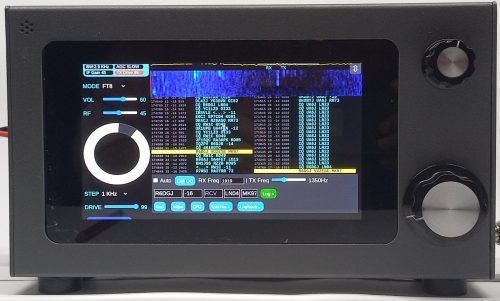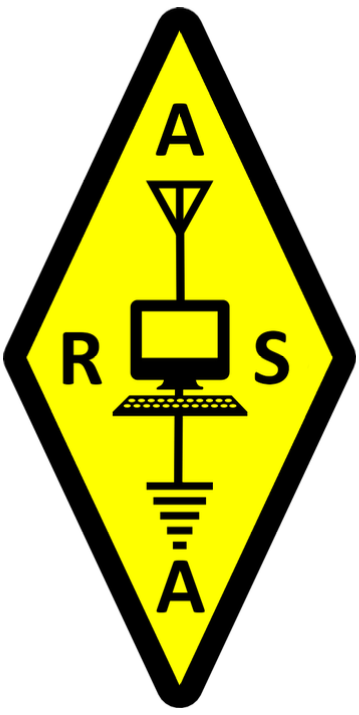via Hackaday: Winamp Releases Source Code, But Is It Really Open?
 The 1990s seem to have reached that point at which they are once more considered...
The 1990s seem to have reached that point at which they are once more considered...  The 1990s seem to have reached that point at which they are once more considered...
The 1990s seem to have reached that point at which they are once more considered...  Since the very beginning, solid-propellants have been the cornerstone of amateur rocketry. From the little...
Since the very beginning, solid-propellants have been the cornerstone of amateur rocketry. From the little...  Battery news typically covers the latest, greatest laboratory or industry breakthroughs to push modern devices...
Battery news typically covers the latest, greatest laboratory or industry breakthroughs to push modern devices... Here are three interesting things I found on mastodon last night. If you’re a mastodon user, you can follow me at @kb6nu@mastodon.radio. If you primarily post about #hamradio, I’ll follow you back.
In 1943, electronics was all about vacuum tubes. This video is a good introduction to how vacuum tubes work and how they were used in industry.
The Open Source in Amateur Radio Wiki provides information about open-source software and hardware as well as free home-brew projects for radio enthusiasts and promote the use of open source software and hardware in amateur radio. The wiki’s founder, Michael, DK1MI, writes, “This wiki cannot be filled and maintained by one person alone, which is why I call on people to register on the wiki in order to correct errors, add information, translate articles and/or create new content.” Check out the how to contribute page for more information.
arcOS is a bootable Linux system on a USB drive. arcOS is founded on the belief that digital communications within communities of operators can be accessible and easy to use for ALL, regardless of license class or experience.
The author of arcOS is KG4VDK. He writes, “By minimizing the number of included applications and complexity, arcOS strives to avoid overwhelming new or inexperienced users, while offering ambitious users the ability to configure additional features and functionality.”
I haven’t tried it yet, but it looks like something to investigate.
Last week, I attended DEFCON, where I gave my “Ham Radio for Hackers” talk and mingled with a number hacker types. This talk seems to have struck a chord. It was featured on Hack-a-Day, and recently, Steve Stroh, N8GNJ, commented that I am “fast becoming the Amateur Radio Evangelist of techies / hackers / makers.”
All this has got me thinking, though, that perhaps I’m not really walking the walk, so to speak. After all, I’m using an Icom IC-7610 in the shack and an Elecraft KX-3 out in the field. I am using a K3NG keyer that I built as my main keyer, and I have been building my own antennas and baluns, but to really earn the title “ham radio hacker” perhaps I need to step up a little more.

So, how do I really earn that title? What comes to mind is that I could sell my current closed-source gear (dare I say appliances) and go with all homebrew and/or open-source gear. For example, for the shack, I could sell my IC-7610 and purchase an HF Signals sBitx. The sBitx is a 40 W, fully open source, high performance HF SDR transceiver with built-in digital modes, including FT8, RTTY, PSK31, and more, in addition to CW and SSB. Based on a Raspberry Pi 4, this radio is very hackable.
For VHF/UHF operation, I could go with any of the radios that support OpenRTX. Open RTX supports M17 on some radios, too. There’s also the Quansheng UV-K5. There are many open-source firmware hacks for this radio.
Antennas I pretty much have covered. I bought a Buddipole about 15 years ago, but aside from HT antennas, that’s the only commercial antenna that I currently own.
These are all just partly-baked ideas at this point. I don’t know if I’ll ever actually do this, but now that I’m retired, I certainly have the time to do it. Please let me know what you think. Are there other cool open-source/homebrew projects out there that I should also consider?
 The Amateur Radio Software Award (ARSA) committee is pleased to announce that they have selected OpenWebRX, a project led by Jakob Ketterl DD5JFK, and OpenWebRX+, a project led by Marat Fayzullin KC1TXE, as the winners of the 5th annual Amateur Radio Software Award. The award recognizes software projects that enhance amateur radio and promote innovation, freedom, and openness in amateur radio software development.
The Amateur Radio Software Award (ARSA) committee is pleased to announce that they have selected OpenWebRX, a project led by Jakob Ketterl DD5JFK, and OpenWebRX+, a project led by Marat Fayzullin KC1TXE, as the winners of the 5th annual Amateur Radio Software Award. The award recognizes software projects that enhance amateur radio and promote innovation, freedom, and openness in amateur radio software development.
These projects allow access to radio reception from around the world, whether they are ham operators, shortwave listeners or somebody curious about radio waves. The committee is impressed with the ease of installation, simplicity of use, and overall features that are provided.
The history of these projects showcase the benefit of open source software. OpenWebRX was originally created by András Retzler but due to the demands of his career he decided to discontinue its development. Jakob Ketterl took over the OpenWebRX project and continues to maintain and improve OpenWebRX. Marat Fayzullin’s OpenWebRX+ builds on top of Jakob Ketterl’s OpenWebRX adding support for additional communication modes and advanced features. Both projects are currently separate, allowing implementers of hosting sites to choose between the simple core version or the enhanced version, while allowing the developers to focus on their projects goals.
Jakob Ketterl plans to use the award money to purchase new hardware for the build system of the OpenWebRX project. Recently he added a number of avionics related modes (ADS-B, VDL2, HFDL), a new decoder for DAB (European digital broadcast standard), the ability to decode RDS / RBDS, and a new experimental data interface in the form of MQTT that is intended to allow third-party processing of the information that is received via OpenWebRX.
Marat Fayzullin’s goal for OpenWebRX+ is to support as many communication modes as possible without the need of tweaking multiple pieces of software. In his own words: “In a way, I view OpenWebRX+ as a real-life ‘tricorder’ for the radio spectrum.”
The ARSA committee is already looking forward to next year’s award and welcomes input and nominations for future awards.



Learn the truth about two popular QRP radios, the TruSDX and QCX-mini, with three simple tests in this video. Understand the differences between the two radios and decide
The video compares two popular QRP rigs, the TruSDX and QCX-mini by QRP Labs, and conducts three tests to determine the difference between the two radios.
The tests include the silence test, the pain test, and the signal purity test. The video aims to provide a subjective opinion on the work of these two rigs without the need to be proficient in technical details such as decibels, microvolts, or dynamic range.
I found this video to be valuable because it provides a straightforward comparison between two popular QRP radios. The three tests conducted in the video helps understand the differences between two radios.
Linas, LY2H, the creator of the video, has a channel dedicated to amateur radio with over 13,000 subscribers. Linas shares his knowledge and experience in the field of amateur radio, provides tutorials, and reviews various radios and equipment.
My best advice for beginners in amateur radio is to start with a simple radio and work your way up to more advanced radios. Always conduct tests and experiments to understand the capabilities and limitations of your radio. Join a local amateur radio club and seek guidance and advice from experienced operators.
Q: What is a QRP radio?
A: A QRP radio is a low power amateur radio transmitter with a maximum output of 5 watts.
Q: What is a dummy load?
A: A dummy load is a device used to simulate an antenna load for testing and tuning a radio transmitter.
Q: What is a Tiny SA?
A: A Tiny SA is a low-cost spectrum analyzer that is used to measure the frequency and strength of radio signals.
Q: What is signal purity?
A: Signal purity refers to the level of interference or noise in a radio signal.
Q: What is a birdie in amateur radio?
A: A birdie is an unwanted signal that is generated within a radio receiver due to internal mixing or local oscillator leakage.
In conclusion, when comparing the TruSDX and QCX-mini radios, it is important to consider the internal noise and birdies produced by each radio. The TruSDX radio produces more internal noise, while the QCX-mini radio is quieter and produces fewer birdies. However, the TruSDX radio has a slightly better signal purity than the QCX-mini radio. Ultimately, the choice between these two radios will depend on the user’s specific needs and preferences, as each has its own strengths and weaknesses.

